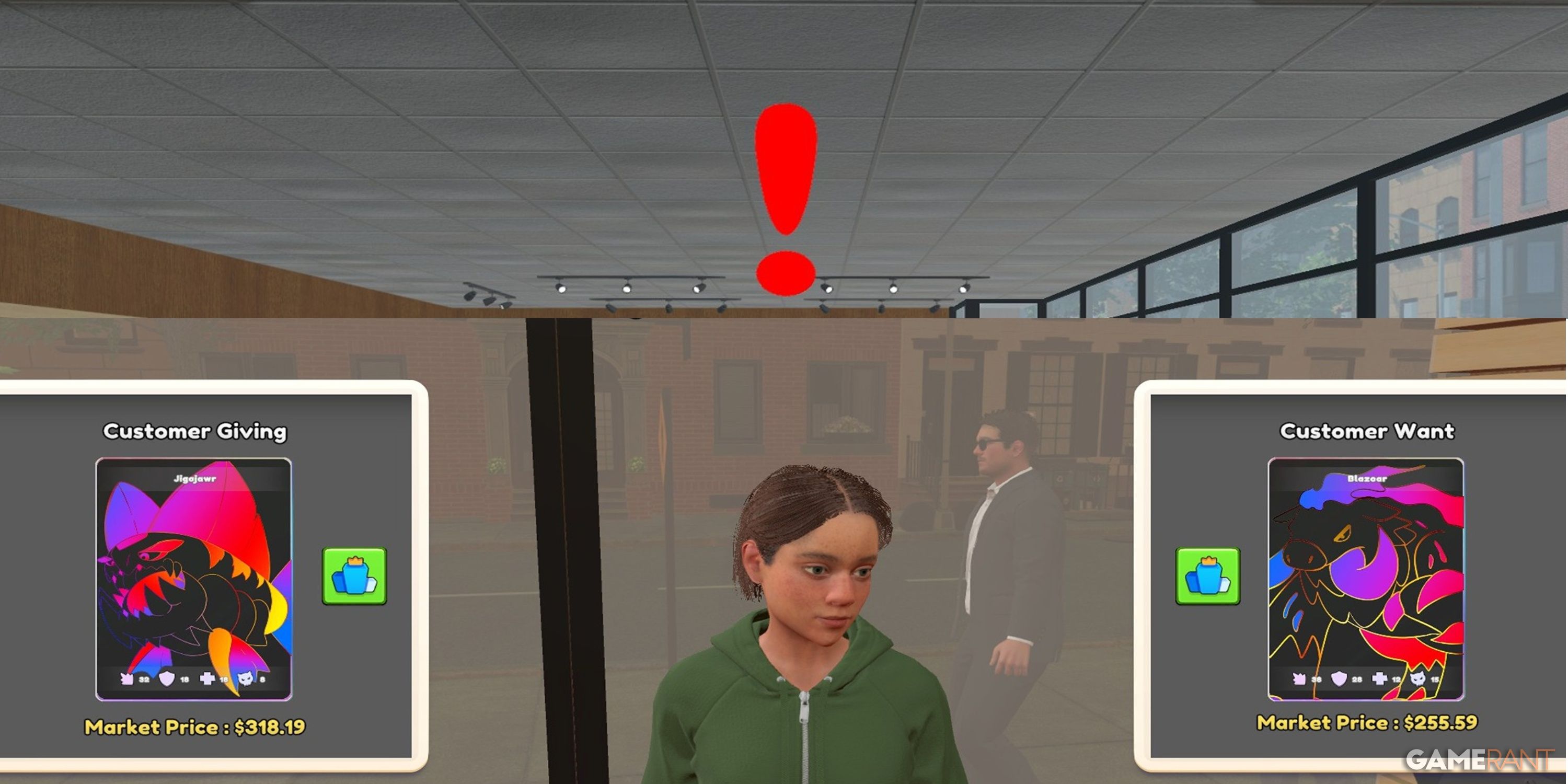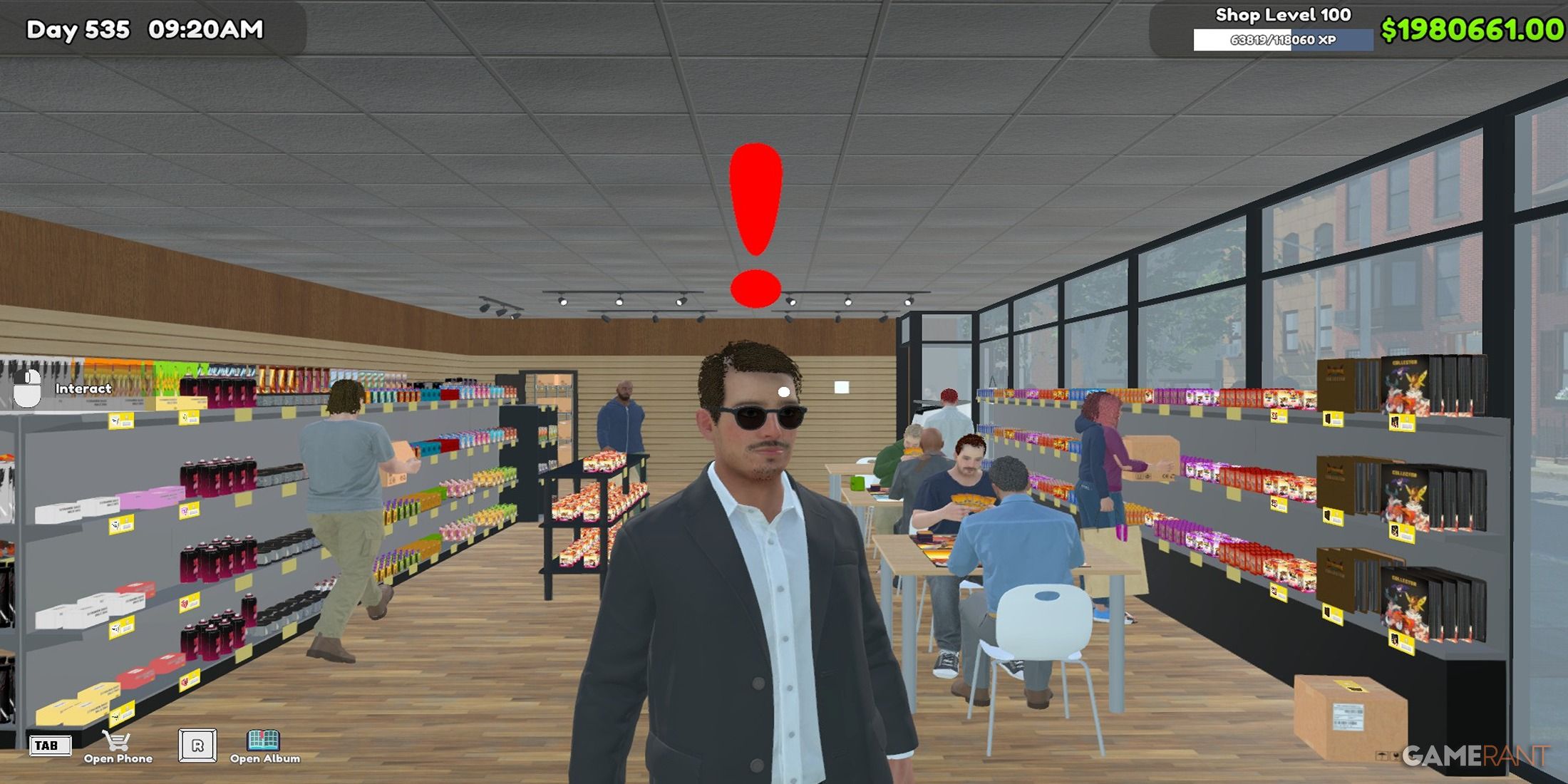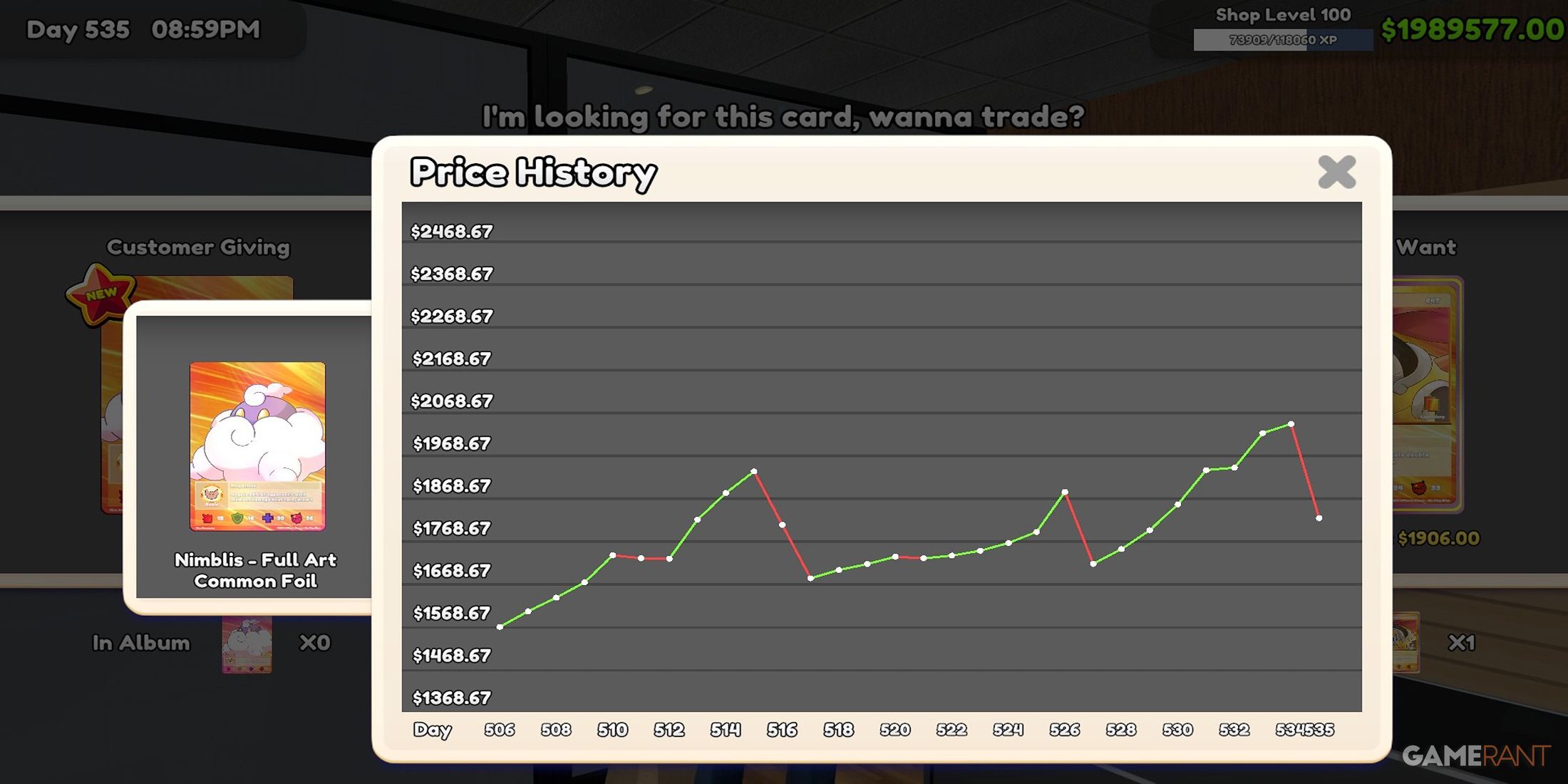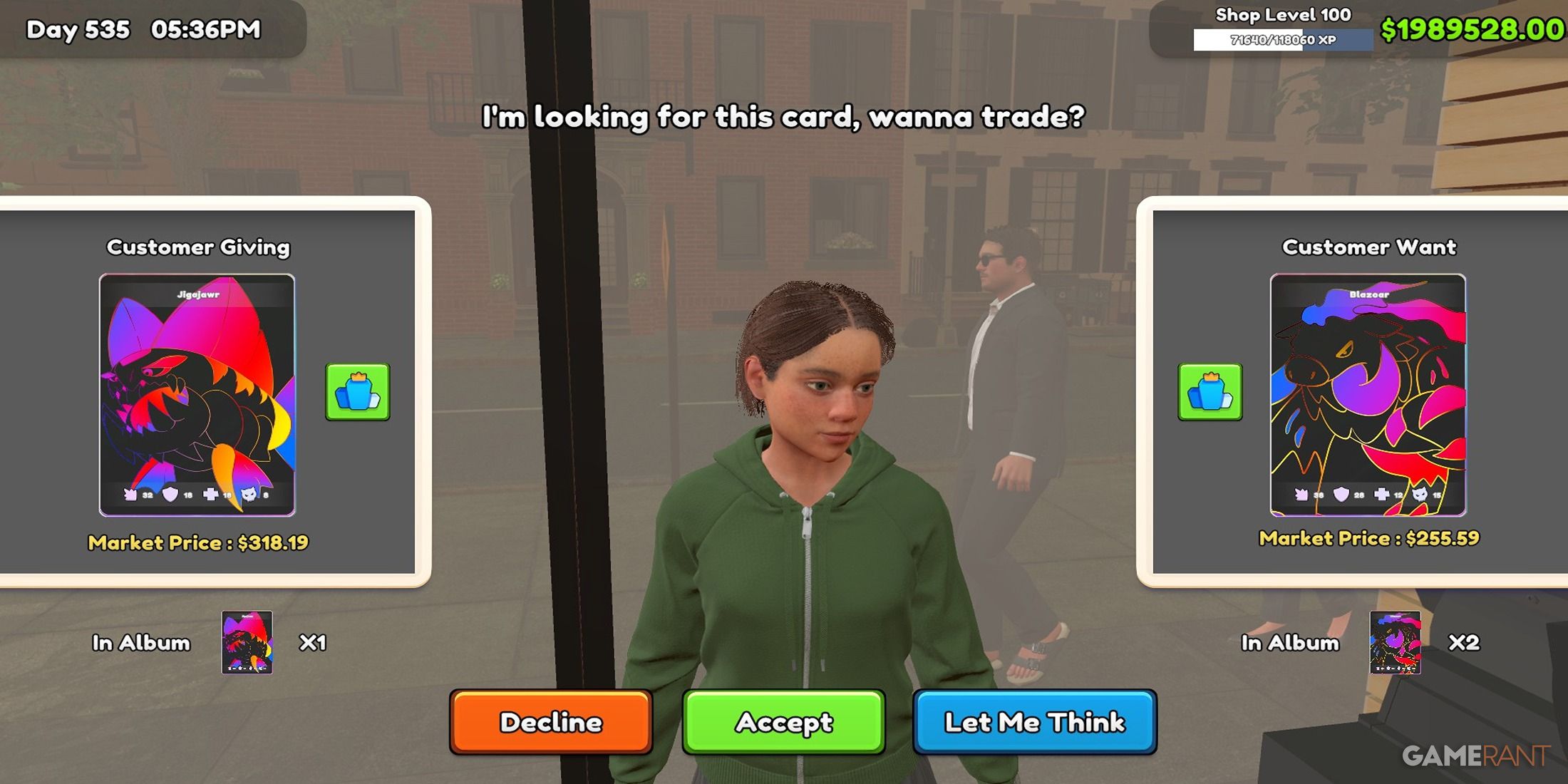
The TCG Card Shop Simulator is consistently being refined with updates, ranging from minor glitch resolutions to the addition of new content. The dedicated development team is putting in significant effort to expand the game, which has already gained widespread popularity. Due to these continuous updates, the player base has been steadily increasing since its launch.
One of its latest upgrades now offers a customer trade function, ideal for passionate collectors aiming to acquire every game card. Grasping the concept of customer trading can assist players not only in expanding their collection but also in generating additional income. This guide will walk you through everything you need to know about customer trading.
How Customer Trading Works in TCG Card Shop Simulator

Essentially, players visiting your store will ask for exchanging cards with you. Regrettably, they cannot select particular cards for trade. Instead, each player arrives at the store prepared with one card to exchange. To identify those who wish to trade, simply look for individuals hovering near a register, as there’ll be a red exclamation mark above their heads, signifying their intention to trade.
Customers who intend to swap cards will hang out near the cashier for one hour in-game time. If there’s no interaction from your side during this time, they might express disappointment and depart from the store. However, if you initiate trade discussions, there’s an option called “Let Me Think.” Choosing this option means the customer will wait for your response while you consider the offer. In fact, if you’ve chosen “Let Me Think,” the customer will remain in the shop until the end of the day. This can be advantageous if you’re keen on buying the card they’re offering but lack the immediate funds to do so. By making them wait a while, you might have time to gather the necessary funds through other sales.
In a trading scenario, customers might be interested in two primary types of transactions. One is called a swap, where a customer requests a specific card they desire. If your inventory lacks this card or you’re unwilling to make the swap, you won’t be able to propose an alternative deal, and instead must decline their offer. It’s important to note that declining a trade has no bearing on customer satisfaction and doesn’t affect your overall store performance. This means it’s perfectly fine if a potential trade slips away, even if the customer seems disappointed upon leaving the store.
As a collector enthusiast, one common reason I encounter fellow enthusiasts is for card trading, particularly those that don’t require specific cards. They usually approach with a specific card and a desired price, leaving it to me to make an appealing offer for their valued possession. Sometimes, prices can be excessive, but other times, I manage to snag a fantastic deal. Moreover, I’ve found that these enthusiasts are often open to negotiations, so striking the optimal balance is key to securing the best trade possible.
As a enthusiast, I can’t stress enough that it’s crucial to remember that a potential customer might decide to back out from a deal. If your initial offer seems ridiculously low, there’s a chance they might flat-out refuse the trade and walk away without further negotiation. So, strive for a fair proposal that leans slightly on the lower side, but steers clear of being offensively low.
When making an offer to a customer, glance at the text displayed above their head for a clue about the progress of negotiations. If the text reads “Absolutely Not For That Price,” it suggests that your offer is too low. On the other hand, if they ask “Is It Possible To Get A Slightly Higher Offer?”, then you’re almost at an agreement.
In many instances, if I feel the cost isn’t quite aligned with what I believe is fair, I’ll engage in some bargaining to see if we can reach a compromise. Just like how sellers often aim to get the highest price for their item, as a buyer, I strive to spend as little as possible. It’s all about finding that sweet spot where both parties feel satisfied.
How to Maximize Your Trade Profits in TCG Card Shop Simulator

When engaging in customer trading, you can not only acquire new cards but also make a good income. Here are some tips to consider when participating in customer trades:
1. Above all, avoid overpaying. It’s simple to get carried away during negotiations and pay more than necessary. If you aren’t particularly keen on the card, try starting with a lower offer and then finding a compromise.
Before putting forth an offer, it’s wise to count your potential trade cards first, especially if you have many. In such cases, consider making a very low offer as a tactic. If they agree or lower their price significantly, that’s a win. However, if not, remember it doesn’t cost you much. Additionally, always verify the market value and current market trends of the card by checking the trade menu. The market fluctuation graph can be useful in predicting the future worth of a card as well.
You too can impact the market by organizing specific events. This strategy could potentially yield profits through customer trading. For instance, if a customer wishes to sell a card that has experienced a drop in value, it might be advantageous to purchase it at a low price, and then choose a table game where that particular card type tends to increase in value. Although this method requires some patience, it offers an opportunity to earn significant returns with minimal effort.
As a passionate enthusiast, I’d like to share a tip that has significantly boosted my daily trading volume: expanding your register stations. When a customer is ready to trade, they’ll approach one of your available stations. Since only one customer can wait for a trade at each station at any given moment, having multiple registers allows more customers to engage in trades simultaneously. In simple terms, if you have two registers, you essentially double the number of potential trades you can handle.
By choosing the “Let Me Think” option when only one customer is allowed to wait for a trade at each checkout, you are essentially holding up other customers from making trades. A more efficient approach would be to process each trade request swiftly to ensure that as many trades as possible can be completed daily.
Trading Ghost Cards in TCG Card Shop Simulator

Occasionally, a customer may visit your store wishing to swap a Ghost Card. Given their scarcity, it’s wise to purchase them whenever the opportunity arises. Finding Ghost Cards within booster packs is quite rare, and the odds of finding one are less than 1%. Therefore, if budget allows, consider trading for Ghost Cards, but ensure the price isn’t exorbitant.
Additionally, as time progresses, the development team has plans to roll out updates that significantly enhance the utility of scarcely found cards. These features, such as card rating systems and a playable Trading Card Game (TCG) mode, will greatly boost the worth of these rare cards for gamers.
Read More
- Unlock the Ultimate Arsenal: Mastering Loadouts in Assassin’s Creed Shadows
- REPO: How To Fix Client Timeout
- 10 Characters You Won’t Believe Are Coming Back in the Next God of War
- Unaware Atelier Master: New Trailer Reveals April 2025 Fantasy Adventure!
- Unlock Wild Cookie Makeovers with Shroomie Shenanigans Event Guide in Cookie Run: Kingdom!
- 8 Best Souls-Like Games With Co-op
- BTC PREDICTION. BTC cryptocurrency
- All Balatro Cheats (Developer Debug Menu)
- How to Reach 80,000M in Dead Rails
- Top 8 UFC 5 Perks Every Fighter Should Use
2025-01-12 19:04